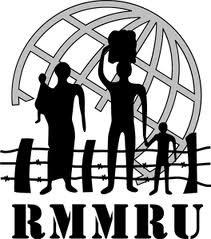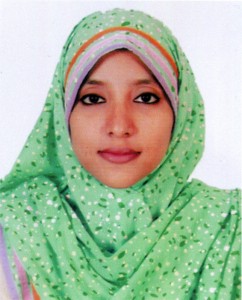Rehania, a coastal village of Bangladesh in Hatiya island, Noakhali. Cyclone, coastal flood, water salinity are some of the common natural hazards in Rehania. Recently, a research survey named DECCMA (Deltas, Vulnerability and Climate Change: Migration and Adaptation) under RMMRU (Refugee and Migratory Movements Research Unit) has been held in this area. For this reason, I had the great opportunity to go to Hatiya and observe the lifestyle of the people in the Rehania village.
Most of the people of Rehania are the victim of natural hazards like flood, river erosion and cyclone. They migrated here from other coastal areas of Noakhali, Lakshmipur, Bhola and Sandhwip(Chittagong). They lost everything from river erosion and cyclones. Government rehabilitated them on the two sides of river dam and gave two decimal lands per family. But it was inadequate for them.
There is lack of effective livelihoods. At first, they earned their livelihood by farming and fishing, but the farming lands in the surrounding areas are also affected by floods more than three times in a year. Flood water is very saline here and as a result, the farming lands become saline. During dry season, a white layer of salt is visible on the land. So farming becomes difficult here. Farmers grow Aaush paddy (a variation of paddy, grows in summer and be harvested during monsoon), chilli and ground nut, but in the most cases crops were destroyed because of flood and water salinity.
Due to global warming, sea levels are rising and salinity of the sea is entering up stream through rivers and feeder canals. Most of the farmers thus leave farming and change their livelihood. In recent years, they earn their livelihood by fishing and doing other jobs through migration. Seasonal migration is an important livelihood strategy to these families. More than 70% of their incomes are derived from outside the village. Among the seasonal migrants most of them work in brickfields in Chittagong. They always go there under a contract and after a working season they come back to home with their wages, of which a mentionable amount is spent for buying fishing nets and boats (in share). They also send some remittances for their family. Fishing is their monsoon season job and during dry season they always migrate for other work (specially in brickfield).
In Rehania, many women are self-employed by animal husbandry. They lease cattle and tend. In exchange, they get some money and can sell milk after giving a specific portion to the cattle owner. When we went to Rehania village for the survey and wanted to interview them, at first, they thought of us as government workers who had come to them for reporting about their life conditions so that they could get their desired governmental help like, materials for building more sustainable house and sanitary latrine. They were eager to take effective training about cultivation method of flood prone areas and also wanted subsidy for agriculture, saline water tolerant crops’ seeds and fishing materials.
When they came to know about our research and its aim, they became tamed, but most of them spread their helping hand and cordially responded to our questionnaire. Though their life is afflicted with lots of pain, they never give up their smiles and hospitality. Whenever we went to any respondent’s house they treated us with green coconuts, ground nuts, mangoes and whatever they had. We were amazed with their cordial behaviour and realized again the hospitable nature of the Bangladeshi people.
We were also amazed with the children of Rehania. They were very interesting. They curiously stared at us, what we were doing with our tablets and questionnaire paper. They wanted to follow us whole the time, but we insisted that they not follow us and instead that they go to their school. Whenever it was possible we offered them chocolates, biscuits, juice to have with us. They also gave us red hibiscus flowers. This flower is available in every house and road sides.
Natural disasters are a part of their life. They always have to face it and struggle against it just like other littoral people. Naturally, they are brave and have adaptational capacities in such a hostile environment. They know how to keep their house safe from cyclones by planting banana and coconut trees around their houses. For a better livelihood they migrate to other places and try to send remittances. They are optimist about their life. They just want some governmental help to make their livelihood more sustainable. The days may be hard, but their hopes and aspirations never be tamed. The always-smiling face is the symbol of their life spirit.
Name: Tamanna Nazneen
Education: Political Science, University of Dhaka




